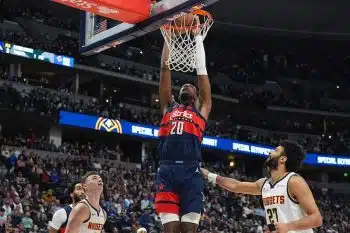Research Features
NBA Draft 2025: Ace Bailey’s Mindset Will Help Him Become an NBA Star

We often hear scouts harping on the value of ‘intangibles’ in draft scouting. It can be challenging to measure what that actually means and its value. But NBA players must harbor a certain mentality and attitude to play in the pros. I often conceptualize it through the lens of a player’s ‘wiring.’
Is a prospect hard-wired to look for their shot above all costs? Do they pass up shots in favor of extra passes? Do they play with an obvious toughness and mean-streak or do they shy away from physicality? These questions are tough to answer, especially without speaking to a player or the people close to him.
A prospect’s approach can determine their ultimate fate as a pro. That’s true for Rutgers freshman Ace Bailey, possibly more than any other prospect this cycle. Plenty of scouts have been somewhat disappointed with the highly touted Bailey’s play, largely due to his interior scoring, overall efficiency and playmaking.
Bailey’s creation limitaions
Coming out of high school, mainstream scouts touted Bailey as the next star wing creator, capable of draining tough shots off of the dribble at will. While Bailey has flashed some of that ability through his first 10 college games, his projection as a creator doesn’t feel as clean as it once did.
To handle high usage at the NBA level, even shooting specialists, drive, pass and score at the rim at an acceptable level. According to Synergy, Bailey attempts a low 15% of his half-court shots at the rim. His free-throw rate (22.9%) and efficiency at the rim (53.7%) are both below average.
His passing numbers are concerning to this point — Bailey’s assist-to-turnover ratio sits at 0.3 with a paltry 4.4% assist rate. Since 2008, the only draft successes with assist-to-turnover ratios below 0.5 are centers. The only wings with comparable passing stats to stick in the NBA are TJ Warren, Al-Farouq Aminu, Doug McDermott and Tari Eason.
While Bailey’s vision and passing skill are stronger than his numbers suggest due to poor shooting from his teammates, it’s hard to ignore those statistical indicators. Bailey’s limitations as a handler, easy advantage creator and playmaker make it tough to envision him becoming an on-ball player at the next level.
Bailey is an excellent off-ball scorer
What Bailey lacks in creation tools he makes up for in off-ball skills. For a 6’9 freshman, Bailey’s movement, shotmaking and slashing flashes without the ball are genuinely special. It’s extremely rare for players of his height to sprint off of screens and fire off of movement like Bailey does.
https://x.com/bjpf_/status/1864411655834054699
Defenses respond to Bailey’s off-ball shooting by running him off of the line and sending doubles. He’s flashed the ability to attack tilted defenses, getting to his floater, pull-up mid-range and even tossing some impressive assists. Bailey’s mid-range efficiency has been elite, shooting 46.2% on 5.2 2-point jumpers per game, according to Synergy.
https://x.com/bjpf_/status/1871311236937457775
At the moment, Bailey’s comfort zone comes with the ball in his hands, isolating, posting up or facing up for tough jumpers. He spent most of his pre-college career doing just that but has faced more obstacles there against college opponents. We still see plenty of instances where Bailey rejects advantages created by others in favor of slow playing into difficult shots. He can make these shots, but that’s a fine line to toe, especially against NBA defenses.
Approach changes will be critical
If Bailey buys into this off-ball role, he could return lots of value to whichever team drafts him. Even if Bailey can’t develop into a creator, jumbo movement shooters with Bailey’s defensive ceiling can be extremely value. It’s easy to conceptualize his role as similar to Michael Porter Jr. (even if they’re different players) — lots of jumpers off of screens and handoffs and occasional drives off of their shooting gravity.
Plenty of prospects have struggled to adapt that wiring in the NBA. It’s tough to abandon the habits that helped a player reach the league. But we’ve seen some successes come from approach changes, as well as notable disappointments.
Andrew Wiggins failed to meet top-pick expectations as an inefficient creator in Minnesota but made an All-Star game in Golden State fueled by defense and complementary scoring. Patrick Williams, a former top-five pick, has never shown the aggression as a scorer needed to thrive on the offensive end despite his theoretical skillset.
I won’t pretend to have an answer to the question of Ace Bailey’s approach. NBA teams will glean that from speaking to him, his coaches, teammates and others close to him. But it’s a question he must answer if Bailey hopes to develop into an NBA star. With the right changes in mindset, it’s easy to imagine him as a high-end starter or low-end star on title winning teams. That might not render him an elite, special prospect, but that outcome would make him worthy of a fairly high pick.











